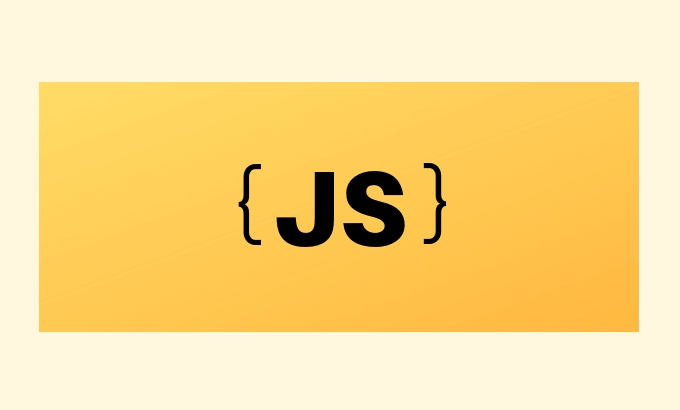Performance Timeline and User Timing APIs are tools for precise measurement and analysis of web performance. Performance Timeline automatically records key events during the page loading process, such as navigationStart, domContentLoadedEventEnd and loadEventEnd; the User Timing API allows developers to manually mark time points through performance.mark(), measure time periods with performance.measure(), and finally get the result through getEntriesByType. In actual use, frequent calls and regular clean marks should be avoided, and performance data can be monitored efficiently with PerformanceObserver.

JavaScript performance optimization is not only about reducing the amount of code or compressing resources, but more importantly, understanding the critical time points in the page loading and execution process. And Performance Timeline and User Timing APIs are the tools that help us do this. They allow us to measure and analyze page performance more carefully and find out where the bottleneck lies.

What are the Performance Timeline and User Timing APIs?
Performance Timeline is a set of APIs provided by the browser, which are used to record various performance metrics during page loading and running, such as resource loading, repainting, parsing time, etc. The User Timing API is part of it, allowing developers to manually mark time points and measurement time periods, allowing for more flexibility in tracking the time-consuming of critical operations.
Both APIs are based on performance objects, and can obtain high-precision timestamps through performance.now() , with an error of less than one thousandth of a millisecond, which is more suitable for performance measurement than Date.now().

How to use the User Timing API to mark critical time points?
The User Timing API provides several core methods:
-
performance.mark(name): Creates a named timestamp mark. -
performance.measure(name, startMark, endMark): measures the time difference between two markers. -
performance.getEntriesByType('measure'): Get records of all measurement types.
For example, if you want to measure how long it takes for a function to execute, you can do this:

performance.mark('start-processing');
// Some complex processing logic processData();
performance.mark('end-processing');
performance.measure('processing-time', 'start-processing', 'end-processing');
const measures = performance.getEntriesByType('measure');
console.log(measures); // The output is similar to { name: "processing-time", duration: 23.45, ... }In this way, you can see the specific time-consuming on the console, which is convenient for subsequent optimization.
What information can Performance Timeline record?
In addition to manually marking time points, Performance Timeline also automatically records many performance events built into the browser. for example:
-
navigationStart: The point in time when the page starts loading. -
domContentLoadedEventEnd: The time when DOM loading is completed. -
loadEventEnd: The time when the entire page is loaded (including resources such as images).
You can view the timeline of all resources loading through performance.getEntriesByType('resource') , such as the time-consuming loading of images, scripts, stylesheets, etc.
This data can be used to analyze the loading performance of the first screen, find resources that are loading slowly, or determine whether certain non-critical resources should be delayed.
What should be paid attention to in practical applications?
Although these APIs are very powerful, there are some details to pay attention to when using them:
- Don't call mark and measure frequently : Although they are not expensive in their own right, frequent logging will increase memory consumption, especially in long-running applications.
- Clean up tags : Use
performance.clearMarks()andperformance.clearMeasures()to regularly clean up unnecessary tags to avoid data pileup. - In combination with PerformanceObserver : If you need to listen for certain types of performance entries (such as resource loading), you can use
PerformanceObserverto listen for added entries instead of polling to get them.
const observer = new PerformanceObserver((list) => {
for (const entry of list.getEntries()) {
console.log(entry.name, entry.duration);
}
});
observer.observe({ type: 'measure', buffered: true });This allows performance data to be processed more efficiently.
Basically that's it
Performance Timeline and User Timing APIs are not complex, but they provide a very practical performance analysis method. As long as you use it reasonably, it can help you understand the running status of the page more deeply and make more effective optimizations.
The above is the detailed content of Advanced JavaScript Performance Timeline and User Timing APIs. For more information, please follow other related articles on the PHP Chinese website!

Hot AI Tools

Undress AI Tool
Undress images for free

Undresser.AI Undress
AI-powered app for creating realistic nude photos

AI Clothes Remover
Online AI tool for removing clothes from photos.

Clothoff.io
AI clothes remover

Video Face Swap
Swap faces in any video effortlessly with our completely free AI face swap tool!

Hot Article

Hot Tools

Notepad++7.3.1
Easy-to-use and free code editor

SublimeText3 Chinese version
Chinese version, very easy to use

Zend Studio 13.0.1
Powerful PHP integrated development environment

Dreamweaver CS6
Visual web development tools

SublimeText3 Mac version
God-level code editing software (SublimeText3)
 How to make an HTTP request in Node.js?
Jul 13, 2025 am 02:18 AM
How to make an HTTP request in Node.js?
Jul 13, 2025 am 02:18 AM
There are three common ways to initiate HTTP requests in Node.js: use built-in modules, axios, and node-fetch. 1. Use the built-in http/https module without dependencies, which is suitable for basic scenarios, but requires manual processing of data stitching and error monitoring, such as using https.get() to obtain data or send POST requests through .write(); 2.axios is a third-party library based on Promise. It has concise syntax and powerful functions, supports async/await, automatic JSON conversion, interceptor, etc. It is recommended to simplify asynchronous request operations; 3.node-fetch provides a style similar to browser fetch, based on Promise and simple syntax
 JavaScript Data Types: Primitive vs Reference
Jul 13, 2025 am 02:43 AM
JavaScript Data Types: Primitive vs Reference
Jul 13, 2025 am 02:43 AM
JavaScript data types are divided into primitive types and reference types. Primitive types include string, number, boolean, null, undefined, and symbol. The values are immutable and copies are copied when assigning values, so they do not affect each other; reference types such as objects, arrays and functions store memory addresses, and variables pointing to the same object will affect each other. Typeof and instanceof can be used to determine types, but pay attention to the historical issues of typeofnull. Understanding these two types of differences can help write more stable and reliable code.
 React vs Angular vs Vue: which js framework is best?
Jul 05, 2025 am 02:24 AM
React vs Angular vs Vue: which js framework is best?
Jul 05, 2025 am 02:24 AM
Which JavaScript framework is the best choice? The answer is to choose the most suitable one according to your needs. 1.React is flexible and free, suitable for medium and large projects that require high customization and team architecture capabilities; 2. Angular provides complete solutions, suitable for enterprise-level applications and long-term maintenance; 3. Vue is easy to use, suitable for small and medium-sized projects or rapid development. In addition, whether there is an existing technology stack, team size, project life cycle and whether SSR is needed are also important factors in choosing a framework. In short, there is no absolutely the best framework, the best choice is the one that suits your needs.
 JavaScript time object, someone builds an eactexe, faster website on Google Chrome, etc.
Jul 08, 2025 pm 02:27 PM
JavaScript time object, someone builds an eactexe, faster website on Google Chrome, etc.
Jul 08, 2025 pm 02:27 PM
Hello, JavaScript developers! Welcome to this week's JavaScript news! This week we will focus on: Oracle's trademark dispute with Deno, new JavaScript time objects are supported by browsers, Google Chrome updates, and some powerful developer tools. Let's get started! Oracle's trademark dispute with Deno Oracle's attempt to register a "JavaScript" trademark has caused controversy. Ryan Dahl, the creator of Node.js and Deno, has filed a petition to cancel the trademark, and he believes that JavaScript is an open standard and should not be used by Oracle
 Handling Promises: Chaining, Error Handling, and Promise Combinators in JavaScript
Jul 08, 2025 am 02:40 AM
Handling Promises: Chaining, Error Handling, and Promise Combinators in JavaScript
Jul 08, 2025 am 02:40 AM
Promise is the core mechanism for handling asynchronous operations in JavaScript. Understanding chain calls, error handling and combiners is the key to mastering their applications. 1. The chain call returns a new Promise through .then() to realize asynchronous process concatenation. Each .then() receives the previous result and can return a value or a Promise; 2. Error handling should use .catch() to catch exceptions to avoid silent failures, and can return the default value in catch to continue the process; 3. Combinators such as Promise.all() (successfully successful only after all success), Promise.race() (the first completion is returned) and Promise.allSettled() (waiting for all completions)
 What is the cache API and how is it used with Service Workers?
Jul 08, 2025 am 02:43 AM
What is the cache API and how is it used with Service Workers?
Jul 08, 2025 am 02:43 AM
CacheAPI is a tool provided by the browser to cache network requests, which is often used in conjunction with ServiceWorker to improve website performance and offline experience. 1. It allows developers to manually store resources such as scripts, style sheets, pictures, etc.; 2. It can match cache responses according to requests; 3. It supports deleting specific caches or clearing the entire cache; 4. It can implement cache priority or network priority strategies through ServiceWorker listening to fetch events; 5. It is often used for offline support, speed up repeated access speed, preloading key resources and background update content; 6. When using it, you need to pay attention to cache version control, storage restrictions and the difference from HTTP caching mechanism.
 Leveraging Array.prototype Methods for Data Manipulation in JavaScript
Jul 06, 2025 am 02:36 AM
Leveraging Array.prototype Methods for Data Manipulation in JavaScript
Jul 06, 2025 am 02:36 AM
JavaScript array built-in methods such as .map(), .filter() and .reduce() can simplify data processing; 1) .map() is used to convert elements one to one to generate new arrays; 2) .filter() is used to filter elements by condition; 3) .reduce() is used to aggregate data as a single value; misuse should be avoided when used, resulting in side effects or performance problems.
 JS roundup: a deep dive into the JavaScript event loop
Jul 08, 2025 am 02:24 AM
JS roundup: a deep dive into the JavaScript event loop
Jul 08, 2025 am 02:24 AM
JavaScript's event loop manages asynchronous operations by coordinating call stacks, WebAPIs, and task queues. 1. The call stack executes synchronous code, and when encountering asynchronous tasks, it is handed over to WebAPI for processing; 2. After the WebAPI completes the task in the background, it puts the callback into the corresponding queue (macro task or micro task); 3. The event loop checks whether the call stack is empty. If it is empty, the callback is taken out from the queue and pushed into the call stack for execution; 4. Micro tasks (such as Promise.then) take precedence over macro tasks (such as setTimeout); 5. Understanding the event loop helps to avoid blocking the main thread and optimize the code execution order.






